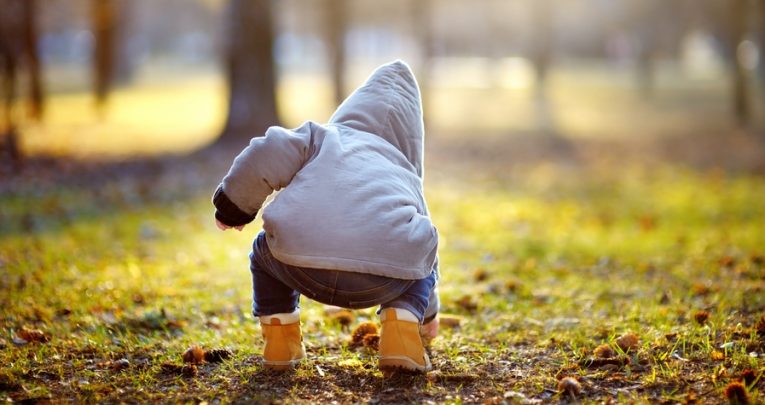Fun Ideas For Early Years Outdoor Learning, Whatever The Weather

Getting out in the cold and wet might feel like an unnecessary hassle – but with some thought, it can provide many rewarding and stress-free experiences for children, says Juno Hollyhock…

I spent a lovely few hours last Christmas with my god-daughter. Now aged three, her birthday falls a couple of days before Christmas Day. Mine falls a couple of days after, and having spent my whole life disentangling reindeer, tinsel and jolly men in red coats from my natal celebrations, I can empathise with her situation.
My parents were very good at ensuring that any sniff of things Yule were firmly removed from the house before my birthday. Woe betide the stray bauble or snowman that found themselves loitering with intent, next to a more appropriately wrapped birthday gift – they were grabbed and hidden immediately.
And woe betide too anyone who wrapped my birthday gifts in Christmas paper, or did that dreaded ‘Joint-Christmas-and-birthday- present’ thing. When you are three, it matters!
Venturing out
So… back to the time we spent together over Christmas. We sat under a table, amidst the legs and feet of more serious grown-ups who were talking about serious and grown-up things, and played a word/picture game. I noticed that many of the objects related to things that were outside – and yet here we were, sat inside playing.
It’s not easy when the weather’s cold or wet to think about going outdoors with young children, but there is much outside that can be fun and engaging. By following a few simple suggestions, you can make venturing out a slightly less daunting prospect…
• Keep it short When it’s cold, going outside for short bursts might be better than planning lengthy excursions. I don’t need to say how important gloves and hats and coats are, but it’s easy to forget that just keeping your trips outside shorter can overcome the problems of chilled fingers and wind-related earache.
If it is very cold, then begin your time outside with a fun flappy-arm, jumpy-feet type of activity (I find pretending to an octopus with hiccups does the trick nicely). This will generate warmth under the layers that will last a while.
• Be engaging It’s equally important to be prepared and keep the children interested! We’ve all played ‘I Spy’ in the back of the car to reduce the ‘Are we there yet?’ questions, and finding ideas to keep a walk engaging can play a similar role, helping to keep tired legs to the back of children’s minds. We are running a project in Scotland that helps to get families outside playing together and our project officer Lorna has come up with some great suggestions to focus attentions…
• Go collecting Collecting is a favourite pastime of young children. Using a nice natural basket with an open top will encourage them to look more closely at what they have chosen. If you don’t have such a basket to hand, a small sandwich bag, nappy sack or, dare I say it, ‘poo bag’ will suffice if necessary!
Just let them put anything in they choose – and don’t forget to have a good look at what they find, to give value to their efforts.
• Get creative One way to encourage collecting is to have the children make natural bracelets. Place some masking tape round their wrists, sticky side out, and commence decorating them with flowers, petals, leaves and other natural items. For older children, a belt or a crown using the same idea are easy to make and can be lots of fun.
Alternatively, you can try making a ‘shield’. Cut out a shield shape from a cereal box, apply some double-sided tape onto it and stick on what you find before heading back.
• Explore your surroundings You might also like to create a natural mobile or ‘journey stick’ that children can use to map where they have been and help them find their way back to the nursery.
Simply attach or tie things to a stick that you pass on the way to your destination. Examples could include a leaf from a tree or a feather; encourage the children to try recalling their way back by referring to the order in which the objects were found.
Juno Hollyhock is executive director of Learning Through Landscapes – a UK charity dedicated to enhancing outdoor learning and play for children; for more information, visit ltl.org.uk or follow @LTL_Outdoors












